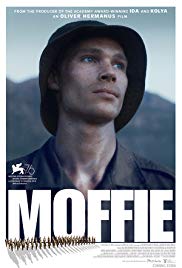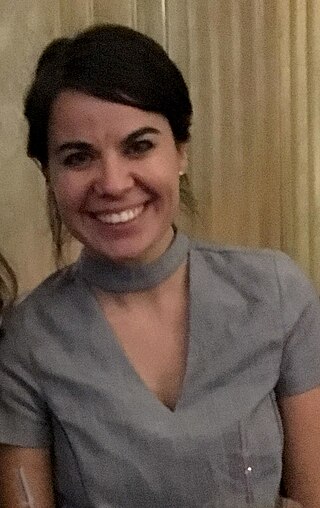
Olu Oguibe is a Nigerian-born American artist and academic. Professor of Art and African-American Studies at the University of Connecticut, Storrs, Oguibe is a senior fellow of the Vera List Center for Art and Politics at the New School, New York City, and the Smithsonian Institution in Washington, DC. He is also an art historian, art curator, and leading contributor to post-colonial theory and new information technology studies. Oguibe is also known to be a well respected scholar and historian of contemporary African and African American art and was honoured with the State of Connecticut Governor's Arts Award for excellence and lifetime achievement on 15 June 2013.

Thomas Hirschhorn is a Swiss artist who lives and works in Paris.
Matthias Weischer is a German painter living in Leipzig. He is considered to be part of the New Leipzig School.
Sarah Sze is an American artist and professor of visual arts at Columbia University.Sze's work explores the role of technology, information, and memory with objects in contemporary life utilizing everyday materials. Her work often represents objects caught in suspension. Drawing from Modernist traditions, Sze confronts the relationship between low-value mass-produced objects in high-value institutions, creating the sense that everyday life objects can be art. She has exhibited internationally and her works are in the collections of several major museums.
El Anatsui is a Ghanaian sculptor active for much of his career in Nigeria. He has drawn particular international attention for his "bottle-top installations". These installations consist of thousands of aluminum pieces sourced from alcohol recycling stations and sewn together with copper wire, which are then transformed into metallic cloth-like wall sculptures. Such materials, while seemingly stiff and sturdy, are actually free and flexible, which often helps with manipulation when installing his sculptures.
Berni Searle is an artist who works with photography, video, and film to produce lens-based installations that stage narratives connected to history, identity, memory, and place. Often politically and socially engaged, her work also draws on universal emotions associated with vulnerability, loss and beauty.
Gavin Jantjes is a South African painter, curator, writer and lecturer.
Nicholas Mukomberanwa, was a Zimbabwean sculptor and art teacher. He was among the most famous protégés of the Workshop School at the National Gallery of Zimbabwe. He was a mentor to the Mukomberanwa Family of sculptors. Mukomberanwa married his first wife, sculptor Grace, in 1965 and they had eight children. In 1965, he decided to end his career with the police to become a sculptor full-time. He continued to hone his skills over the following decade, developing one of the most distinctive personal styles found in his generation of Zimbabwean stone sculptors. The gambit paid off, and by the late 1970s and in the 1980s his work was being shown in many venues. His work has been exhibited in galleries around the world. He also became mentor to many artists in Zimbabwe, including his children Anderson Mukomberanwa, Ennica Mukomberanwa, Lawrence Mukomberanwa, Netsai Mukomberanwa, Taguma Mukomberanwa,Tendai Mukomberanwa and nephew, Nesbert Mukomberanwa who are also sculptors. He remains one of Zimbabwe's most famous artists.
Fred Wilson is an American artist and describes himself as of "African, Native American, European and Amerindian" descent. He received a BFA from Purchase College, State University of New York. Wilson challenges colonial assumptions on history, culture, and race – encouraging viewers to consider the social and historical narratives that represent the western canon. Wilson received a MacArthur Foundation "genius grant" in 1999 and the Larry Aldrich Foundation Award in 2003. Wilson represented the United States at the Biennial Cairo in 1992 and the Venice Biennale in 2003. In May 2008, it was announced that Wilson would become a Whitney Museum trustee replacing Chuck Close.

Zanele Muholi is a South African artist and visual activist working in photography, video, and installation. Muholi's work focuses on race, gender and sexuality with a body of work that dates back to the early 2000s, documenting and celebrating the lives of South Africa's Black lesbian, gay, transgender, and intersex communities. Muholi is non-binary and uses they/them pronouns, explaining that "I'm just human".
Chika Okeke-Agulu is a Nigerian artist, art historian, art curator, and blogger specializing in African and African diaspora art history. He lives in Princeton, New Jersey.

Rajeeb Samdani is a Bangladeshi industrialist and art collector. As of 2021, he is the managing director of Golden Harvest Group, a Bangladeshi conglomerate, and the founder and trustee of Samdani Art Foundation which produces the Dhaka Art Summit.

Sue Williamson is an artist and writer based in Cape Town, South Africa.

Chaitanya Tamhane is an Indian filmmaker, known for the 2014 Marathi courtroom drama Court. It was announced as India's official submission for the 88th Academy Awards in the Best Foreign Language Film category. The film examines the Indian legal system through the trial of an aging folk singer in a lower court in Mumbai.
Meschac Gaba is a Beninese conceptual artist based in Rotterdam and Cotonou. His installations of everyday objects whimsically juxtapose African and Western cultural identities and commerce. He is best known for The Museum of Contemporary African Art 1997–2002, an autobiographical 12-room installation acquired and displayed by the Tate Modern in 2013. He has also exhibited at the Studio Museum in Harlem and at the 2003 Venice Biennale.
The 54th Venice Biennale was an international contemporary art exhibition held in 2011. The Venice Biennale takes place biennially in Venice, Italy. Artistic director Bice Curiger curated its central exhibition, "ILLUMInations".

Moffie is a 2019 biographical war romantic drama film co-written and directed by Oliver Hermanus. Based on the autobiographical novel of the same name by André Carl van der Merwe, the film depicts mandatory conscription into the notorious South African Defence Force (SADF) during apartheid through the eyes of a young closeted character Nicholas van der Swart as he attempts to hide his attraction to another gay recruit in a hostile environment. The title derives from a homophobic slur in South Africa used to police masculinity.

Gloria Cabral is a Brazilian-Paraguayan architect, a titular partner of the firm Gabinete Arquitectura.
The Forest Town raid was a 1966 police raid that targeted LGBT people in Forest Town, Gauteng. The raid led to proposed anti-homosexuality legislation in South Africa. It also helped coalesce the queer community in South Africa.
James Inedu-George is a Nigerian architect and writer. He co-founds HTL Africa, Tao South Africa and HTL Asia. In 2017, he was nominated for the Rolex Mentor and Protégé Arts Initiative.







